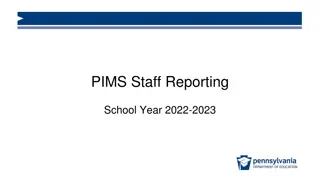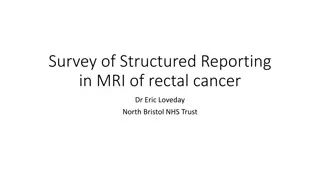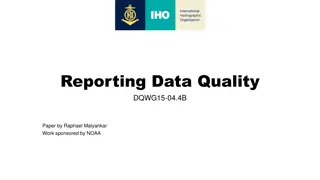
Proper Guidelines for Writing Ultrasound Reports
Understand the importance of justifying and performing ultrasound examinations, and how to accurately document findings in a written report. Learn the key elements to include, such as patient details, examination details, findings interpretation, and recommendations for follow-up. Adhere to standards set by professional bodies to ensure the quality and safety of patient care.
Download Presentation

Please find below an Image/Link to download the presentation.
The content on the website is provided AS IS for your information and personal use only. It may not be sold, licensed, or shared on other websites without obtaining consent from the author. If you encounter any issues during the download, it is possible that the publisher has removed the file from their server.
You are allowed to download the files provided on this website for personal or commercial use, subject to the condition that they are used lawfully. All files are the property of their respective owners.
The content on the website is provided AS IS for your information and personal use only. It may not be sold, licensed, or shared on other websites without obtaining consent from the author.
E N D
Presentation Transcript
Ultrasound requests/examinations should be justified and performed to answer a specific clinical question An ultrasound report is a public document and part of the patient s medical record (SCoR& BMUS 2015) The report should be written and issued by a suitably qualified practitioner who performs the examination
The Royal College of Radiologists (RCR) state that investigations must only be reviewed by individuals who have the relevant knowledge and qualifications to do so. A written account of the findings from said review is required in order to influence patient management and treatment where necessary.
Standard 1 -Every imaging investigation must be reported within an agreed time by an individual qualified to interpret that particular investigation. Prompt feedback is critical in the management of patients. Standard 2 -All imaging investigations must be accompanied by a formal permanently recorded written report. A verbal report can be given to the patient at the time of scan depending on individual preference, however, a separate written account must be documented
Any kind of patient documentation should be stored in an appropriate way. Data stored should clearly reflect the information gathered during the ultrasound examination. The patients data should be kept safe.
Comply with local protocol Be concise Be easy to understand Be unambiguous Use ultrasound terminology Explain significance of findings Only use common abbreviations Be audited regularly to ensure satisfactory standards and facilitate improvements
In essence the written report should answer the clinical question The author is responsible for the accuracy of the report
Reports should include: Patient s full details (Name, DoB, Unique identifier/CHI) Examination date and time Clinical history and reason for examination Examination performed/Structures assessed/Probe employed A record of any relevant measurements taken Description of relevant findings Interpretation of findings/diagnosis/differentials Actions taken on account of findings Recommendations for follow up where appropriate Limitations of examination Details of the individual performing the procedure
Location (area, tissue) Size Type (cystic, solid) Echogenicity (anechoic, hypoechoic, isoechoic, hyperechoic) Echo-structure (homogenous, heterogenous) Borders (well defined, regular, irregular) Relation to surrounding structures (attached to , displacing ) Response to compression (compressible, movable, floating) Vascularity
Images: most clearly showing the pathology, its size, vascularity and relation to surrounding tissues. should include common landmarks. MUST be recorded in two perpendicular planes. Description: should support documented images, additional information on location of the pathology, relation to other structures, compressibility, displacement, and response to the dynamic examination (i.e. flexion/extension of the related joint).
All Ultrasound service providers should have facility to store whole examination's (RCR, 2014)
Royal College of Radiologists, 2014, Standards for the provision of an ultrasound service [online] https://www.rcr.ac.uk/sites/default/files/publication/BFCR%2814%2917_Standard s_ultrasound.pdf Society and College of Radiographers and British medical Ultrasound Society, 2015, Guidelines for Professional Ultrasound practice [online] https://www.bmus.org/tatic/uploads/resources/GUIDELINES_FOR_PROFESSIONAL_ULTR ASOUND_PRACTICE.pdf






















